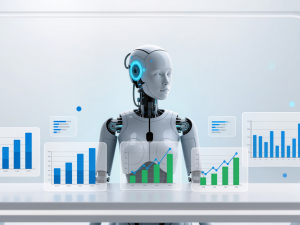China did something unusual during one of the most important moments in its education system: it turned off parts of AI. During the gaokao, the national college entrance exam that decides a student’s entire academic future, major tech companies temporarily disabled key AI features, including image recognition and chatbot tools. It wasn’t a glitch or an accident. It was a deliberate move meant to stop AI-powered cheating.
This single decision instantly grabbed global attention, not just because of the scale of the exam, but because of what it represents. Around the world, AI is changing how students learn, how teachers teach, and how EdTech platforms build their products. But China’s “AI blackout” showed something important: embracing AI doesn’t mean letting it roam free. Even the most advanced AI-driven education systems need guardrails.
This moment gives us a window into the future: how countries might regulate AI in classrooms, how exams may evolve, and how students will experience technology depending on where they live.
Let’s break down what happened, why it matters, and what the world can learn from it.
Why Did China Disable AI Tools During Exams?
China’s exam season isn’t just another school event, it’s a national priority. The gaokao decides university admissions, job opportunities, and, for many families, long-term social mobility. Because the stakes are so high, even the slightest hint of cheating is treated as a national concern.
That’s what led to the temporary AI shutdown.
During the 2025 gaokao, major tech companies like Alibaba and Tencent turned off features linked to generative AI, including image recognition and real-time answer generation. Chatbots displayed messages saying certain functions were “temporarily unavailable to ensure exam fairness.” At the same time, exam halls were surrounded by radio blockers, 360° surveillance cameras, and AI-powered systems designed to detect abnormal behaviour.
The blackout wasn’t a rejection of AI, it was a way to protect the integrity of an exam that millions of students prepare for over years. In a country where even one unfair advantage can spark national debate, disabling AI during exam week was seen as the safest path.
This decision also revealed something deeper: even in systems that heavily invest in AI education, there are moments where technology must pause so traditional standards remain intact.
What Can Other Countries Learn From China’s “AI Blackouts”?
China’s decision didn’t happen in isolation and it certainly wasn’t just a local policy tweak. It highlighted a global truth: as AI becomes more ingrained in education, nations will need clear boundaries between support and misuse.
One of the biggest lessons is the importance of protecting academic integrity while still encouraging innovation. China is pushing AI into classrooms faster than almost any other country, yet it paused those same tools when the stakes were highest. That balance is something policymakers everywhere will need to consider.
Another key insight is that regulation must match cultural and social priorities. The gaokao carries enormous weight in Chinese society; therefore, tightening control during exams made sense. In countries where assessments are more decentralized or lower-stakes, governments may take different approaches. But the core message stays the same: if students can use AI tools to bypass learning, education systems need updated exam formats and stronger digital policies.
China also showed that regulation works best when governments and tech companies move together. The blackout wasn’t forced, it was coordinated. This kind of collaboration could become a global model: tech companies adjusting features during exams, schools updating guidelines, and governments creating national frameworks instead of leaving everything to individual classrooms.
Ultimately, the blackout taught the world that AI can empower learning, but without structure and guardrails, it can also weaken the very systems it aims to improve.
How Do These Trends Shape the Future of Teaching and Assessment?
As AI becomes part of everyday learning, schools can no longer rely on old assessment models. China’s blackout made that clear: if students can use AI to generate answers instantly, then exams built around memorization simply won’t hold up. This is already pushing educators worldwide to rethink what and how they assess.
The shift begins with moving away from fact-recall tests and toward evaluating skills AI can’t easily replicate: creativity, reasoning, problem-solving, and real-world application. Instead of asking students to write predictable essay questions, teachers are exploring project-based assessments, oral evaluations, practical tasks, and scenario-based problem solving. These formats reward original thought and make cheating far harder.
Technology also changes teachers’ roles. Instead of being the main source of information, educators increasingly act as mentors who guide students through AI-supported learning environments. With AI handling repetitive tasks like grading or content recommendations, teachers can spend more time on personalized feedback and deeper discussions.
At the same time, schools are realizing that AI needs ethical boundaries and transparency. Clear classroom guidelines on what AI can be used for, when it’s off-limits, how to cite it are becoming essential parts of modern teaching. China’s blackout may be extreme, but its core idea remains: there must be moments where the human mindset, not the machine, drives the learning.
All these changes point to a future where assessments look different, teaching feels more personalized, and classrooms focus on thinking rather than memorizing.
How Will Students Around the World Be Affected by These New AI Policies?
Students everywhere are stepping into an education system where technology is no longer optional it’s embedded in how they learn, how they’re assessed, and how future careers will be shaped. AI regulation will influence that experience differently depending on where they live.
In regions with strong digital infrastructure, students may benefit from AI-powered tutoring, virtual labs, automated feedback, and personalized learning plans. These tools can help students move at their own pace and close learning gaps more quickly than traditional methods. However, stricter policies around exams and academic honesty mean students must learn when AI is a support tool and when it must be switched off.
Countries with limited access to technology might see the opposite challenge. AI regulation could widen the gap if schools don’t have equal access to devices, internet, or training. While China’s nationwide policies ensure every student receives AI instruction, not all countries can roll out infrastructure at that scale. This means equity must become part of global AI policy not an afterthought.
Another major impact will be on students’ digital responsibilities. As AI restrictions become standard in exams, classrooms will start teaching AI ethics, digital literacy, and responsible use the same way they teach writing or science. Students won’t just learn with AI; they’ll learn how to question it, check its accuracy, and use it in ways that support not replace their thinking.
Overall, global policies will shape whether AI becomes a tool that empowers every student or one that only benefits a few. How countries respond now will decide how fair, accessible, and innovative education becomes for the next generation.
What Does China’s Approach Reveal About the Future of EdTech Regulation Globally?
China’s AI strategy full-speed adoption with carefully timed restrictions signals where global regulation is headed. Most countries won’t copy the “AI blackout” model exactly, but they will borrow the underlying idea: AI in education needs rules, not just enthusiasm.
One clear trend is the shift toward national frameworks, not scattered school-level policies. China treats AI literacy as a long-term investment, building an entire curriculum from primary school upwards. Other nations are beginning to realize that without consistent standards, AI use in classrooms becomes uneven, confusing, and sometimes risky. This will likely push governments to create unified guidelines around AI, data use, and exam conduct.
Another direction is closer collaboration between governments and tech companies. China’s blackout was only possible because private companies cooperated voluntarily. As AI grows more influential, EdTech platforms worldwide will face increasing pressure to align content, features, and security practices with national education policies.
There’s also a rising focus on ethical AI, especially around privacy, fairness, and student well-being. China’s actions emphasize that even advanced tools must operate within boundaries. Globally, we can expect clearer rules on how student data is collected, stored, and used—and a much stronger emphasis on transparency from EdTech companies.
Finally, China’s approach highlights a bigger shift in mindset: AI in education isn’t just a tech upgrade; it’s a societal choice. Regulations will shape what skills students learn, how they’re assessed, and how technology fits into everyday learning. Countries that treat AI thoughtfully balancing innovation with protection will build systems that prepare students for the future without compromising fairness or trust.
What Does All This Mean for the Future of Course Design and EdTech?
The ripple effects of China’s AI blackout go far beyond exam halls; they’re reshaping how EdTech companies build products and how educators design courses for a new era of learning. If AI can no longer be used freely in every context, EdTech can’t assume every feature will be allowed everywhere. Instead, course creators now have to think about AI-aware design: building learning experiences that enhance understanding without encouraging reliance.
For educators, this means assessments and course materials will gradually shift toward tasks that measure uniquely human strengths. Lesson plans will focus more on analysis, creativity, and interpretation areas where AI can assist but not replace the learner’s original thinking. Even AI-powered tools must now be built with accountability in mind, offering transparency about how recommendations are made or how feedback is generated.
For EdTech companies, compliance becomes part of the product journey. Platforms may need region-specific settings, exam-safe modes, clearer data policies, and features that help teachers track AI-assisted work ethically. More importantly, the industry will need to emphasize trust. Students, parents, and institutions want tools that empower learning without enabling shortcuts, and companies that deliver that balance will stand out.
These shifts also open new paths for innovation. Safe-mode AI tutors, verifiable academic workflows, bias-checked assessment tools, and transparent analytics dashboards will become standard expectations rather than optional add-ons. In many ways, China’s blackout is a preview of the environment EdTech will operate in: high accountability, high expectations, and high demand for tools that respect both learning integrity and student growth.
Course design is moving toward a future where AI is woven into learning but never allowed to overshadow it.
CONCLUSION
China’s AI blackouts may have lasted only a few days, but the message they sent will shape education far longer. They showed the world that AI in learning isn’t just about faster feedback, better tutoring, or smarter tools, it’s about responsibility. When a country that invests heavily in AI pauses it during a high-stakes moment, it signals that innovation must work hand-in-hand with integrity.
For educators, this means designing lessons and assessments that value original thinking over shortcuts. For EdTech companies, it means building products that support learning without crossing ethical lines. And for students everywhere, it marks the beginning of a future where AI becomes a partner in their growth, not a loophole in their education.
As more countries rethink policies, update exams, and redefine classroom norms, one thing becomes clear: the global conversation around AI in education is only just beginning. The real question now is whether schools, governments, and EdTech companies can shape this future in a way that strengthens learning rather than complicating it.
FAQs
1. Why did China disable AI tools during exam week?
To protect the fairness of the gaokao, China temporarily shut down AI features that could help students cheat. It wasn’t anti-AI it was a controlled pause to prevent misuse during a high-stakes exam.
2. Does this mean schools should stop using AI altogether?
Not at all. China continues to expand AI in classrooms. The blackout simply shows that AI needs rules especially for exams, assessments, and situations where integrity matters most.
3. How will global AI regulations impact students?
Students may have more structured guidelines around when AI can be used and when it must be turned off. They’ll also be expected to learn AI ethics, digital literacy, and responsible use as part of their regular education.
4. What does this mean for EdTech companies building AI tools?
EdTech platforms will need to design features that respect academic honesty, protect student data, and comply with regional rules. Expect more “exam-safe” modes, transparent AI feedback, and stricter privacy controls.
5. Will countries outside China adopt similar exam restrictions?
Some might. As AI becomes more capable, governments will likely introduce rules for assessments. The exact approach will vary by country, but the core idea remains the same: support learning, protect fairness.






